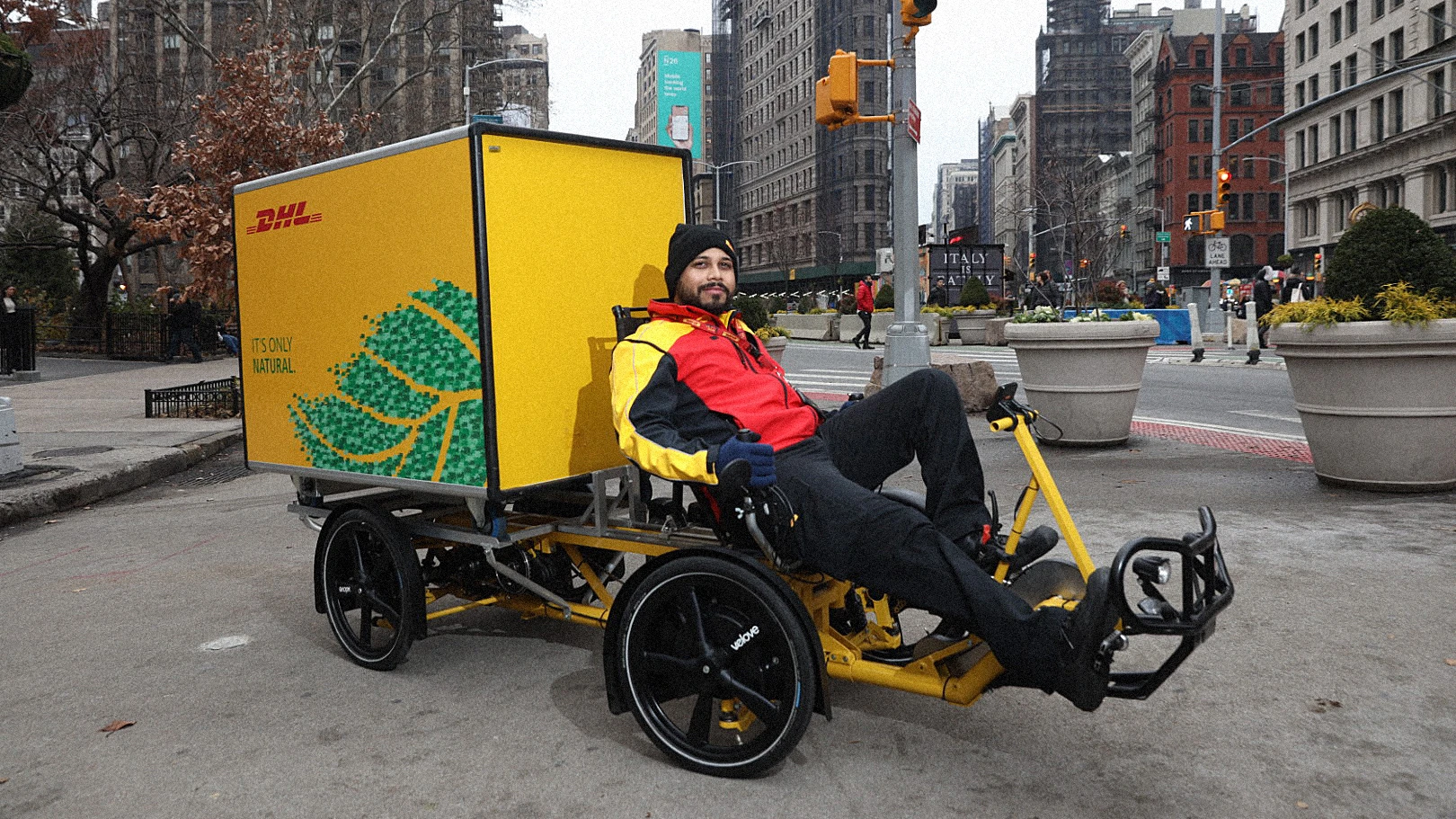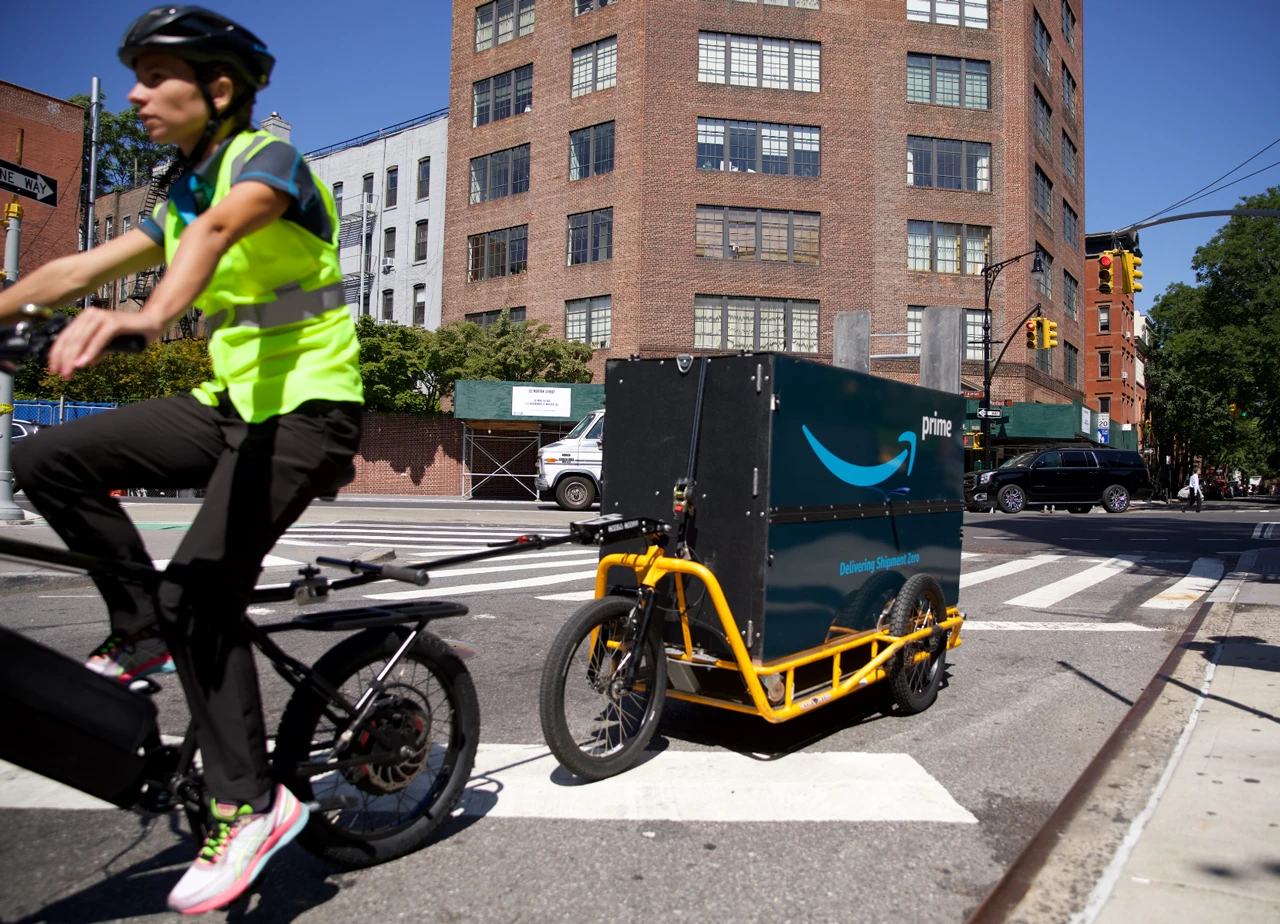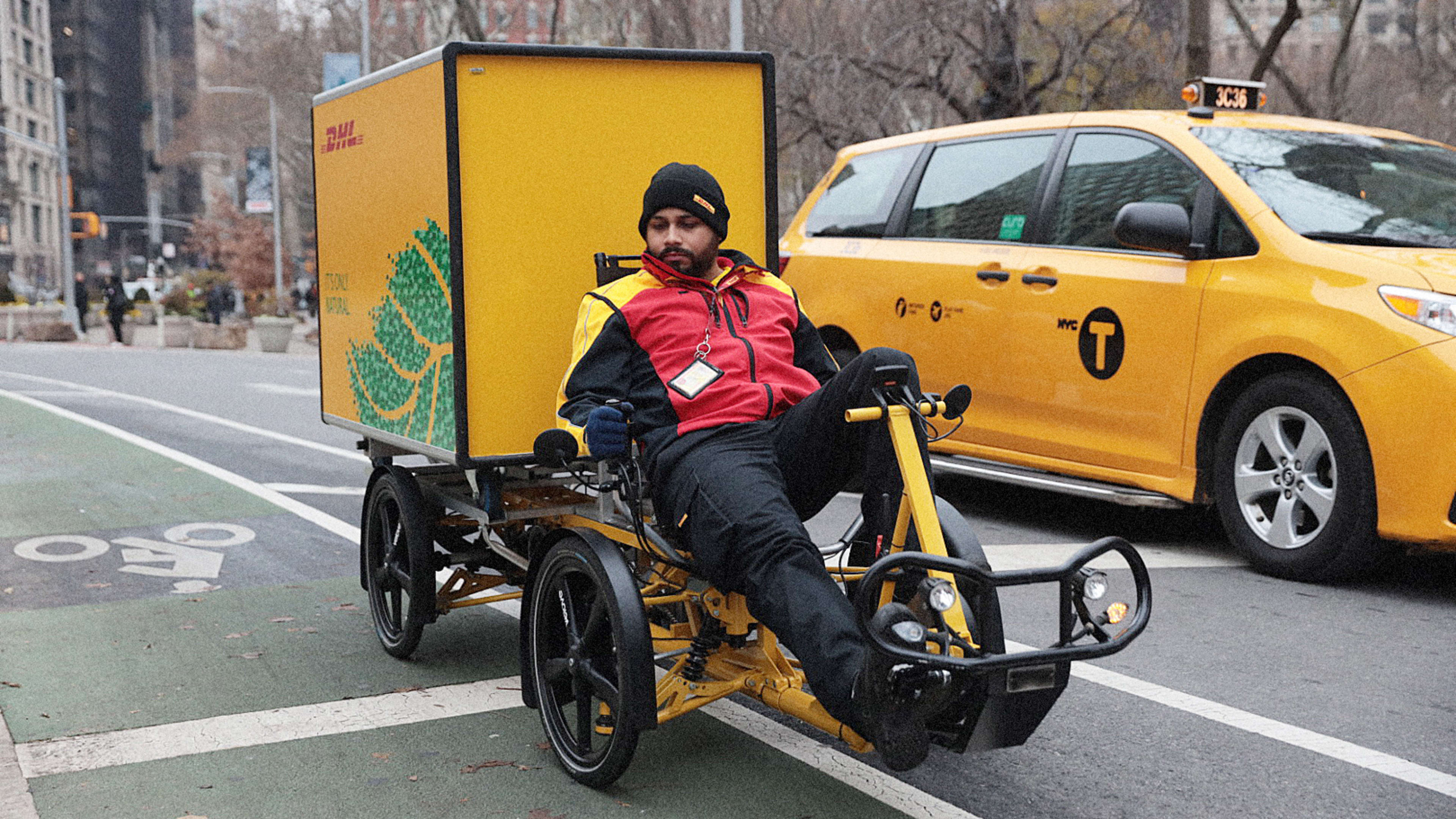At a UPS operating center in midtown Manhattan, two cargo delivery bikes will soon begin rolling out of a driveway in the morning a few hours before the usual delivery trucks begin their routes. The company is part of a new six-month pilot program in New York City that will test how well cargo bikes, with electric “pedal assist” for couriers, can potentially help relieve traffic by replacing some delivery trucks. A similar system is already in use in several other cities around the world: New York can learn from what’s working elsewhere to consider how the pilot could scale up.
In European cities, UPS typically brings a shipping container from a depot to a spot in the city center early in the morning, and couriers on bikes take loads of deliveries to nearby neighborhoods. Since the cargo bikes can’t carry as much as a truck, the cyclists have to make multiple trips; the system only makes economic sense in congested areas where trucks struggle to park, but bikes can reach customers more quickly. (We’re using the term bike liberally here, many of these vehicles have more than two wheels.)

But those two factors alone aren’t enough for the system to work, Harris says. A partnership with the city is crucial, particularly to find a central location for a “microhub” container to sit during the day (in New York, this isn’t yet part of the plan.) At the moment, UPS uses its own containers as mini hubs in cities like Dublin. In a test in Seattle, it rented some parking spaces from the city for a temporary hub. But larger locations could potentially be shared by multiple carriers in the future.
“You could imagine underutilized areas of real estate in the center of cities now,” he says. “An example of that would be in some cities in Europe, we’re finding that public parking car parking spaces are becoming underutilized because people are not driving into cities in a way that they were . . . Areas like that could potentially be turned over into downtown urban logistics hubs from which operations of this type could be based.”

Decent bike lanes are another key part of making the system work. “New York has really made strides in terms of their bike infrastructure and bike lanes, so I think that’s been helpful for us,” says Bruce Marsh, senior manager of corporate public policy at DHL, which is also part of the pilot. DHL first launched cargo bike delivery in the Netherlands and Germany in 2015, and says that each bike that it deploys can remove one conventional delivery van from the road. (In New York, it uses electric delivery vans, but even then, bikes use far less energy; the company’s pedal-assist bikes draw power from solar panels on the bike.) New York, arguably, can make many more improvements on its bike lanes—particularly the fact that bike lanes are often blocked, sometimes by delivery trucks themselves. Cities may also need to do more to provide places for delivery bikes to park; the New York pilot will allow the bikes to park in commercial loading zones.
For logistics companies, the bikes aren’t solely a way to cut emissions, but something that the companies see as necessary as cities get more crowded and e-commerce continues to grow, since bikes can navigate more easily and avoid racking up millions in parking tickets. (Last year, FedEx, UPS, FreshDirect, and Peapod had parking tickets totaling $27 million in New York City.) European cities are beginning to restrict trucks and cars in some areas; New York City is talking about congestion pricing. “It’s a smart move for us, in addition to the sustainability goals,” says Marsh.

The pilot is starting at a small scale. Amazon, which is working toward a commitment to cut its emissions to net-zero by 2040, has already been using cargo bikes to make Prime Now deliveries from some Whole Foods locations in New York for the last 10 months; it has around 90 bikes in service, and UPS and DHL will each begin by testing two bikes. Some smaller delivery companies also already use cargo bikes in New York. But UPS alone uses 6,400 trucks in the city to deliver 413,000 packages every day. To make a meaningful dent in the city’s air pollution and traffic congestion, far more bikes will have to be deployed.
Bikes are unlikely to ever be the full solution to the city’s deliveries, Harris says, but in the future they may be used in combination with electric trucks and drones. “I think what we have to learn as an industry and where we’re trying to figure that out as an organization, in conjunction with some partners in the academic world, is how to optimize that combination in a way that minimizes the cost of deployment, because that maximizes the rate at which we can bring these things to scale,” he says.
And in the right places, bikes could potentially take over a signifigant number of deliveries. “In the circumstances we’ve talked about, dense central areas where we have a lot of customers, and the partnership is there and the infrastructure is there—that describes a lot of real estate,” says Harris. “It’s difficult to put a number on it and we’re still trying to figure that out. But I think that there’s no question that cycle solutions can be a significant contributor to urban logistics going forward.”
Recognize your brand’s excellence by applying to this year’s Brands That Matter Awards before the early-rate deadline, May 3.
